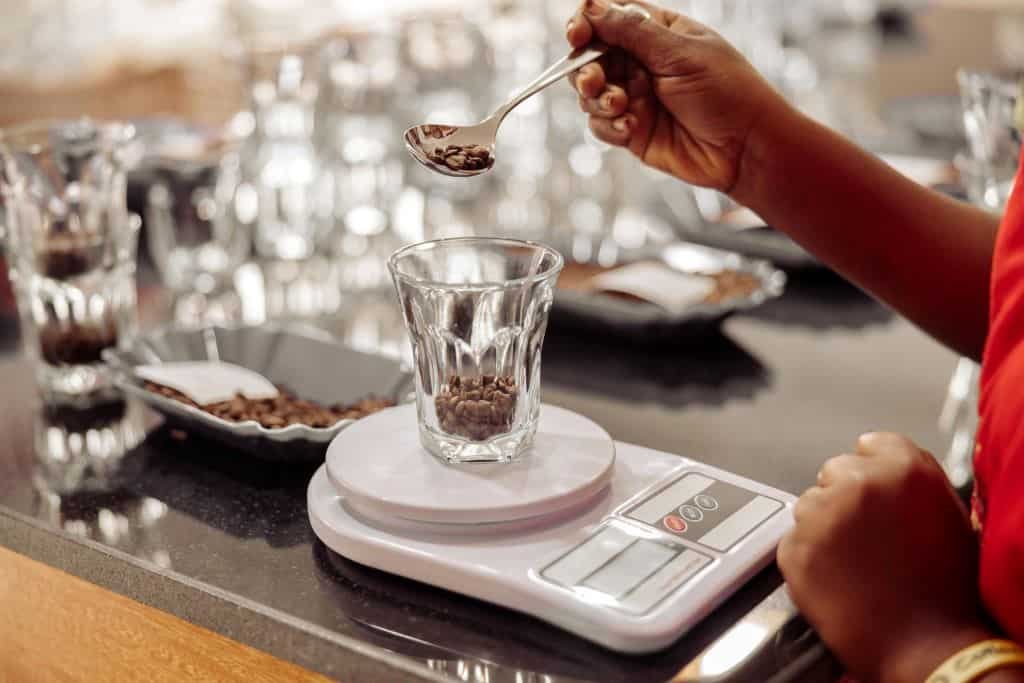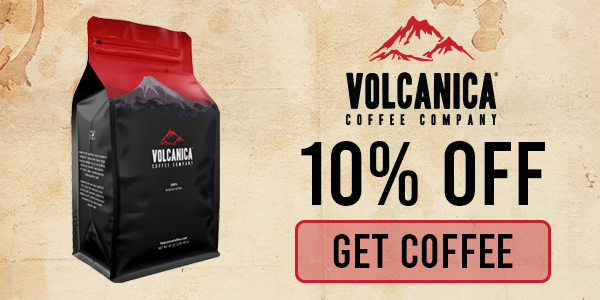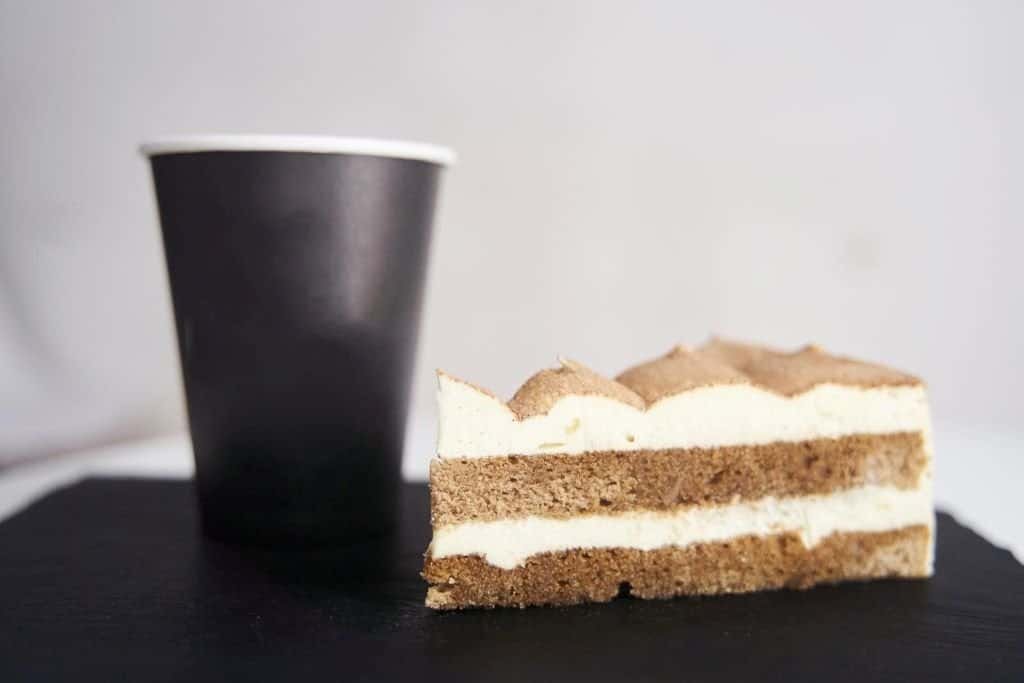For coffee lovers, the perfect cup of coffee can make or break their day. But what do you do when you don’t have a coffee scoop to measure out the perfect amount of coffee grounds? Fear not; there are several ways to measure coffee without a scoop.
One of the most common ways to measure coffee without a scoop is by using a tablespoon. A tablespoon can hold about 6 grams of whole coffee beans, making it easy to measure out the exact amount of coffee needed for a cup. Another option is to use a kitchen scale to measure a 1:16 ratio of coffee-to-water in grams, which is about 22 grams of coffee for 350ml of water. With these methods, coffee lovers can still enjoy a perfect cup of coffee even without a scoop.
Why Measuring Coffee Is Important

Measuring coffee is an important aspect of making a great cup of coffee, whether you are a coffee aficionado or just someone who enjoys a good cup of joe. Here are a few reasons why measuring coffee is important:
Accuracy
Measuring coffee ensures that you are using the correct amount of coffee grounds for the amount of water you are using. This is important because using too little coffee grounds will result in a weak cup of coffee, while using too many coffee grounds will result in a bitter and over-extracted cup of coffee. Measuring your coffee ensures that you are getting the right strength and flavor every time.
Strength and Flavor
Measuring coffee is also important for getting the right strength and flavor in your cup. The amount of coffee you use will affect the strength of your coffee, while the grind size will affect the flavor. By measuring your coffee, you can ensure that you are getting the right balance of strength and flavor in your cup.
Harmony
Measuring your coffee also helps to ensure harmony between the coffee and water. Using too much or too little coffee can result in an unbalanced cup, while using the right amount of coffee ensures that the coffee and water are in harmony, resulting in a delicious and balanced cup of coffee.
Specialty Coffee
For those who enjoy specialty coffee, measuring your coffee is even more important. Specialty coffee requires precise measurements to ensure that you are getting the full flavor and complexity of the coffee. Measuring your coffee ensures that you are getting the most out of your specialty coffee.

Different Ways to Measure Coffee
When it comes to measuring coffee, there are several methods that can be used. Each method has its own pros and cons, and it ultimately depends on the individual’s preference and equipment available. Here are some of the most common ways to measure coffee:
Measuring Coffee Using a Tablespoon
Using a tablespoon is one of the easiest ways to measure coffee. A tablespoon can hold about 6 grams of coffee beans, which is equivalent to one serving of coffee. Simply measure out the desired amount of coffee beans using a tablespoon and grind them to the desired size.
Measuring Coffee Using a Teaspoon
A teaspoon can also be used to measure coffee, but it requires more precision as it can only hold about 2 grams of coffee beans. Using a teaspoon, you will need to measure out 3 teaspoons of coffee beans for one serving of coffee.
Counting Coffee Beans
Counting coffee beans is another method that can be used to measure coffee, but it requires more time and effort. To use this method, count out the desired number of coffee beans and grind them to the desired size. However, this method is not as accurate as using a scale.
Measuring Coffee by Volume
Measuring coffee by volume is another option, but it can be less accurate than using a scale. A standard measuring cup can hold about 8 ounces or 240 ml of coffee. Simply measure out the desired amount of coffee using a measuring cup and level it off with a knife.
Using a Kitchen Scale
Using a kitchen scale is the most accurate way to measure coffee. A food scale can measure the coffee-to-water ratio in grams, which is usually a 1:16 ratio of coffee-to-water. For example, for 350ml of water, you would need 22 grams of coffee.
Using a Digital Scale
A digital scale is another option for measuring coffee, and it offers more precision than a kitchen scale. A digital scale can measure coffee in increments of 0.1 grams, making it ideal for those who are particular about their coffee-to-water ratio.
- High precision: The coffee scale with high precision sensor can provide you with accurate measurement from 0.1g to 2kg (the initial minimum weight is 0.5G).
- High-quality materials: made of high-quality acrylic, compact, thin and durable. The fine matte surface prevents fingerprints and accidental scratches. Equipped with silicone insulation waterproof pad…
- High-end function: TIMEMORE coffee scale integrates two advanced buttons for easy operation. A large backlit LCD screen displays weight in grams. The coffee scale has an automatic timing function,…
Measuring Coffee Without a Scoop
If you don’t have a scoop, you can use any of the above methods to measure coffee without a scoop. However, it’s important to note that using a scoop can be more convenient and consistent, especially if you have a measuring scoop specifically for coffee.
In conclusion, there are several ways to measure coffee, and each method has its own advantages and disadvantages. It’s important to find the method that works best for you and your equipment.
How to Determine the Right Coffee-to-Water Ratio
When it comes to brewing coffee, getting the right ratio of coffee to water is crucial to achieving the perfect cup. While most coffee makers come with a scoop, it’s not always accurate. So, how can you determine the right coffee-to-water ratio without a scoop? Here are some tips:
The Golden Ratio of Coffee to Water
The Golden Ratio of coffee to water is a widely accepted standard for brewing coffee. It suggests using two tablespoons of coffee (10g) for every six fluid ounces (180 ml) of water. This ratio is based on the American Standards of the Golden Cup, which is the ideal cup of coffee.
However, it’s important to note that this ratio may not work for everyone. Some people prefer stronger coffee, while others prefer weaker coffee. In such cases, it’s best to adjust the ratio to suit your taste.
Using a Coffee Scale
One of the most accurate ways to measure coffee without a scoop is by using a coffee scale. A coffee scale measures the weight of the coffee, which is more precise than measuring by volume. To use a coffee scale, simply weigh the coffee and water separately, and then multiply the weight of the coffee by the desired ratio to determine the amount of water needed.
Measuring by Volume
If you don’t have a coffee scale, you can still measure coffee by volume. However, it’s important to note that this method may not be as accurate as measuring by weight. To measure coffee by volume, use a measuring cup or spoon to measure the coffee and water separately.
Adjusting for Stronger or Weaker Coffee
If you prefer stronger coffee, you can adjust the ratio by using more coffee and less water. Conversely, if you prefer weaker coffee, you can adjust the ratio by using less coffee and more water.
Taking Density into Account
It’s important to note that different types of coffee have different densities, which can affect the amount of coffee needed. For example, darker roasts are less dense than lighter roasts, which means you may need to use more coffee to achieve the same strength.
In conclusion, determining the right coffee-to-water ratio without a scoop is possible. By using a coffee scale or measuring by volume, adjusting for stronger or weaker coffee, and taking density into account, you can achieve the perfect cup of coffee every time.
Wrapping Things Up
In conclusion, measuring coffee without a scoop is not as difficult as it may seem. Whether using a tablespoon, a food scale, or simply estimating with a few basic ratios, there are several methods available to ensure a consistent and delicious cup of coffee every time.
It is important to remember that the amount of coffee used can greatly affect the taste and strength of the final product. Experiment with different ratios and methods to find what works best for personal preferences.
Additionally, investing in a quality coffee grinder can greatly improve the accuracy and consistency of coffee measurements. Freshly ground beans can also enhance the overall flavor and aroma of the coffee.
Lastly, always use clean and dry measuring tools to avoid any contamination or inconsistency in the coffee measurement. With these tips and tricks, anyone can become a coffee measuring pro even without a scoop.





